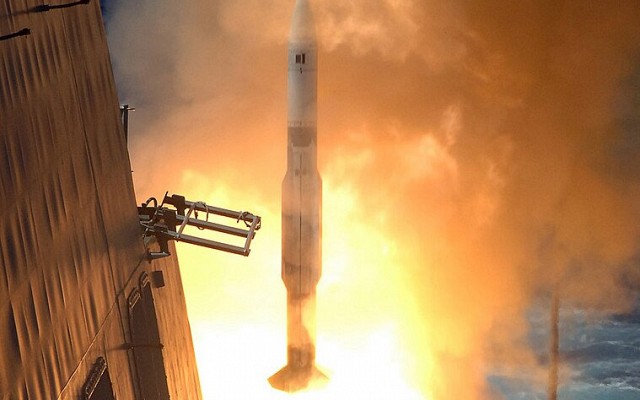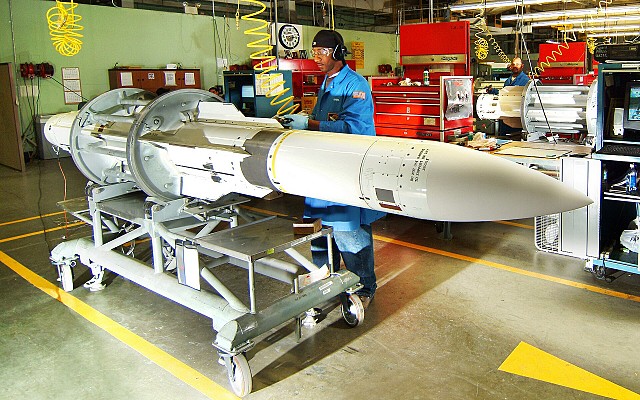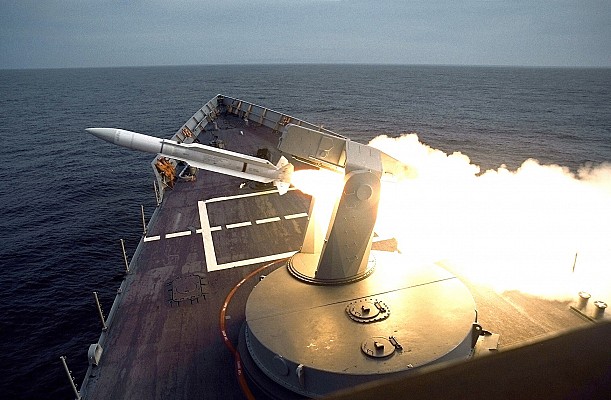RIM-66 Standard SM-2MR
Standard Missile 2 Medium Range
Overview
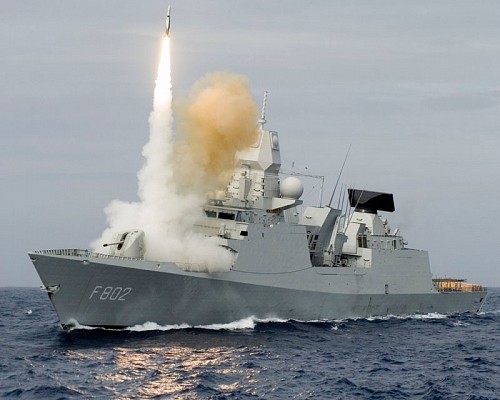
De Zeven Provinciën class
De Zeven Provinciën class destroyer launching a SM-2 surface to air missile.
Source: Ministerie van Defensie -
© GNU Attribution Share Alike license
1983 for Block II
1991 for Block IIIA
Europe (component production)
Japan
Europe
Description
Introduction
The Standard SM-2MR is a late Cold War era surface to air missile of US origin. SM-2MR is a deep modernization of the first generation of medium range Standard missile. The SM-2MR missile was developed for the Aegis combat data system. The main objective was to increase the number of simultaneous aerial threats that can be engaged. SM-2MR has seen over four decades of development, making present day SM-2MR vastly superior over the first model introduced in 1978.
Design
SM-2MR has a similar layout as the SM-1MR, making them externally nearly identical. All but the very first block feature a new dual thrust Mk 104 solid propellant rocket motor, which significantly increases the range. This makes the SM-2MR suitable for area air defense, even though longer range Standard missiles exist. Over time the navigation system, fuse design, warhead model and various other components were significantly updated.
Guidance
The vast majority of SM-2MR missile variants use semi-active radar homing. A major difference compared to SM-1MR is that the target only needs to be illuminated in the terminal stage. Inertial navigation is used to guide the missile towards the target location. There are two major advantages to this approach. First, the target has a very short warning that it is being engaged. Second, the illuminating radars can switch targets faster. Thus increasing the number of targets that can be engaged simultaneously. This improves defense against saturation attacks with anti-ship missiles or multiple aircraft. Some SM-2MR missiles feature other guidance modes. Block IIIB missiles have a secondary infrared homing seeker for improved ECCM performance, or to engage targets obscured by objects or radar horizon. Block IIIC missiles feature an active radar homing seeker, a seeker type that does not depend on target illumination by an external source
Firepower
When introduced the SM-2MR already achieved a major range increase to over 60 km by using a more optimal flight path with its inertial navigation system. With the new rocket motor the range has more than doubled, while flight speed has increased to over Mach 3. Maximum range for later model SM-2MR is rather vague, but lies between 150 and 185 km. Effective range against low flying and maneuvering targets is likely below 100km. Maximum altitude is over 24 km. Early models could engage low flying targets, but did nog have a proper fuse for use against sea skimming targets. Late model missile can effectively engage sea skimming missiles, providing a standoff capability before missiles reach close-in defenses.
Platforms
SM-2MR has been produced in various models for different launch systems and guidance configurations. SM-2MR was intended for the Aegis system, which at first became available with the Mark 26 GMLS on the first five Ticonderoga class cruisers. Further ships in class used the Mark 41 Vertical Launch system, which is also used on the Arleigh Burke class destroyer. A significant number of older vessels with the Tartar system received the New Threat Update (NTU) for compatibility with the SM-2MR. Foreign navies have mostly adopted the Mark 41 VLS, using either the Aegis system or NAAWS system using Dutch radar systems.
Users
The SM-2MR was adopted in large quantity by the US Navy. Block I and II missiles are now out of service. Many having been upgraded, some more than once, to bring them up to later Blocks. Various European nations have also adopted Block III missiles, using either Aegis or NAAWS sensor suites. Japan is another major export user, using the Aegis systems on vessels with a similar layout as the US Arleigh Burke class destroyer.
Variants

SM-2MR Block I
First iteration Standard SM-2MR. Still very similar to the SM-1MR, although performance is much increased due to having an optimized flight path towards the target. Since SM-2MR only requires guidance in the terminal stage targets have less response time.
RIM-66C: Block I for Aegis system and rail launcher.
RIM-66D: Block I for New Threat Update for existing Tartar systems.

SM-2MR Block II
Block II is the first major redesign. Introduced in 1983. It has a new rocket motor and more effective warhead. Block II also includes the first variant for the Mark 41 Vertical Launch System.
RIM-66G: Block II missile for Aegis system with Mk 26 GMLS.
RIM-66H: Block II missile for Aegis system with Mk 41 VLS.
RIM-66J: Block II missile for New Threat Update and rail launchers.

SM-2MR Block III
Block III missiles include a new proximity fuse that allows targets to be intercepted at lower altitudes. The design program was launched in 1984 and procurement started in the late 1980's.
RIM-66K-1: Block III for New Threat Update for Tartar systems.
RIM-66L-1: Block III for Aegis ships with Mk 26 GMLS.
RIM-66M-1: Block III for Aegis system and Mk 41 VLS.

SM-2MR Block IIIA
The Block IIIA adds a new and higher performance warhead in addition to the Block III updates. The Block IIIA is also the first missile compatible with the European Anti-Air Warfare system.
RIM-66K-2: Block IIIA for New Threat Update for Tartar systems.
RIM-66L-2: Block IIIA for Aegis ships with Mk 26 GMLS.
RIM-66M-2: Block IIIA missiles for the Mk 41 VLS. Compatible with both the American Aegis system as well as the European NAAWS.

SM-2MR Block IIIB
Block IIIB introduces a dual model seeker by adding an infrared homing seeker in a fairing. Block IIIB was no longer produced/converted for rail launchers.
RIM-66M-5: Block IIIB as introduced in 1998. Similar to Block IIIA but with new dual mode seeker.
RIM-66M-9: Block IIIB for Mk 41 VLS with improved Mk 45 Mod 14 fuse.
RIM-66M-10: Block IIB for Mk 41 VLS with "Manueverability Upgrade 2" introducing an improved guidance section.

SM-2MR Block IIIC Active
Block IIIC missiles feature an active radar homing seeker, hence the suffix 'Active' that is sometimes used for extra clarity. The ARH seeker does not require the target to be illuminated by a fire control radar. Development has been deferred several times, but Block IIIC is reportedly active since the early 2020's.
Details
Media
Launchers
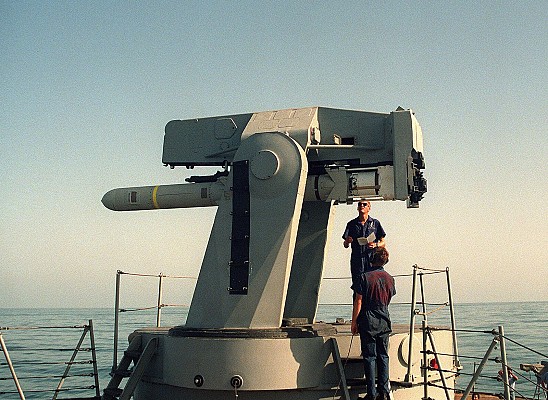
Mark 13 GMLS
The Mark 13 GMLS are single rail launchers, which were previously used for the SM-1MR. The SM-2MR missiles can be used on ships which have received the New Threat Update for their Tartar fire control system.
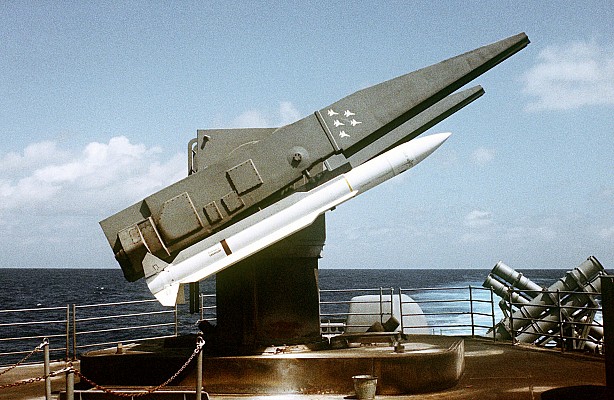
Mark 26 GMLS
The Mark 26 GMLS are twin rail launchers. These are used on the Ticonderoga class cruisers with Aegis systems. The Virginia class cruisers and Kidd class destroyers were fitted with the NTU in order to launch the SM-2MR.
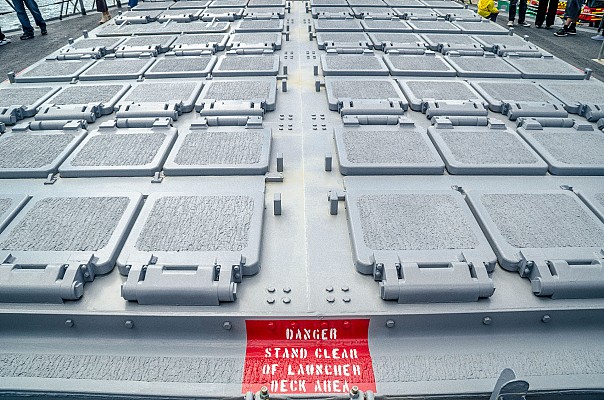
Mark 41 VLS
The Mark 41 Vertical Launch System is the most common type of launcher for the SM-2MR. Later Blocks of SM-2MR were only produced for the Mark 41 VLS.
